
Épinglé sur Tuinideeën
Award-winning Cornus kousa 'Miss Satomi' (Kousa Dogwood) is an upright, spreading, medium-sized deciduous shrub with four seasons of interest. In spring, a heavenly array of star-like blooms appear. They consist of four narrowly pointed deep pink bracts surrounding the center cluster of tiny yellowish-green flowers. The blossoms give way to.

Cornus kousa var. chinensis Cornus kousa var. chinensis Van den Berk Pépinières
Autumn colour Position Soil Native to Japan and Korea, Cornus kousa is a large shrub or tree with two good seasons of interest. In early summer it bears white bracts with tiny flowers in the centre, set against the green leaves, and in autumn the leaves flare bronze and crimson.

Pin de Loki em Small Trees
Cornus kousa is one of those trees that can easily be at home in any landscape. It's not a huge tree -- growing to a maximum height and spread of 15 to 30 feet, depending on which cultivar you plant. Younger Japanese flowering dogwoods have a vase-shaped growth pattern, but as the plants mature, the branches take on a more horizontal growth.
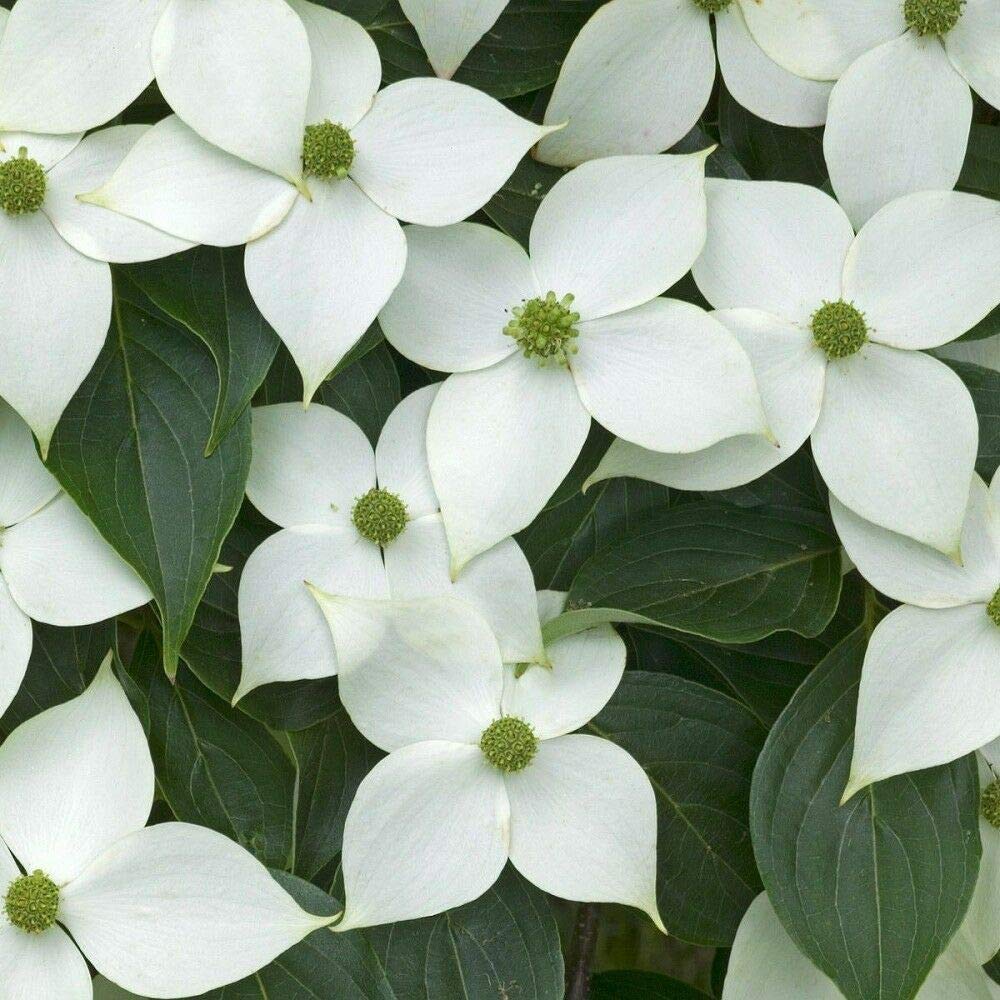
Cornus kousa Products Courville Nurseries
Hance. Cornus kousa. A deciduous shrub or small tree up to 20 ft in height, of bushy habit; young shoots glabrous. Leaves ovate sometimes broadly so with a slender point and wedge-shaped or rounded base, 1 1 ⁄ 2 to 3 in. long, 3 ⁄ 4 to 1 3 ⁄ 4 in. wide; margin undulated; both surfaces have minute, scattered hairs at first, becoming.

Cornus Kousa Autumn Stock Photos & Cornus Kousa Autumn Stock Images Alamy
Cornus kousa 'Autumn Rose' is a slow growing broadleaf deciduous tree with variegated and green foliage and white flowers in summer followed by red and pink fruit. It can grow 15 FT - 20 FT - wide, 15 FT - 25 FT - tall. It contributes glossy texture to the garden. Attractive to birds. To grow well, it prefers sun - mostly shade and regular.
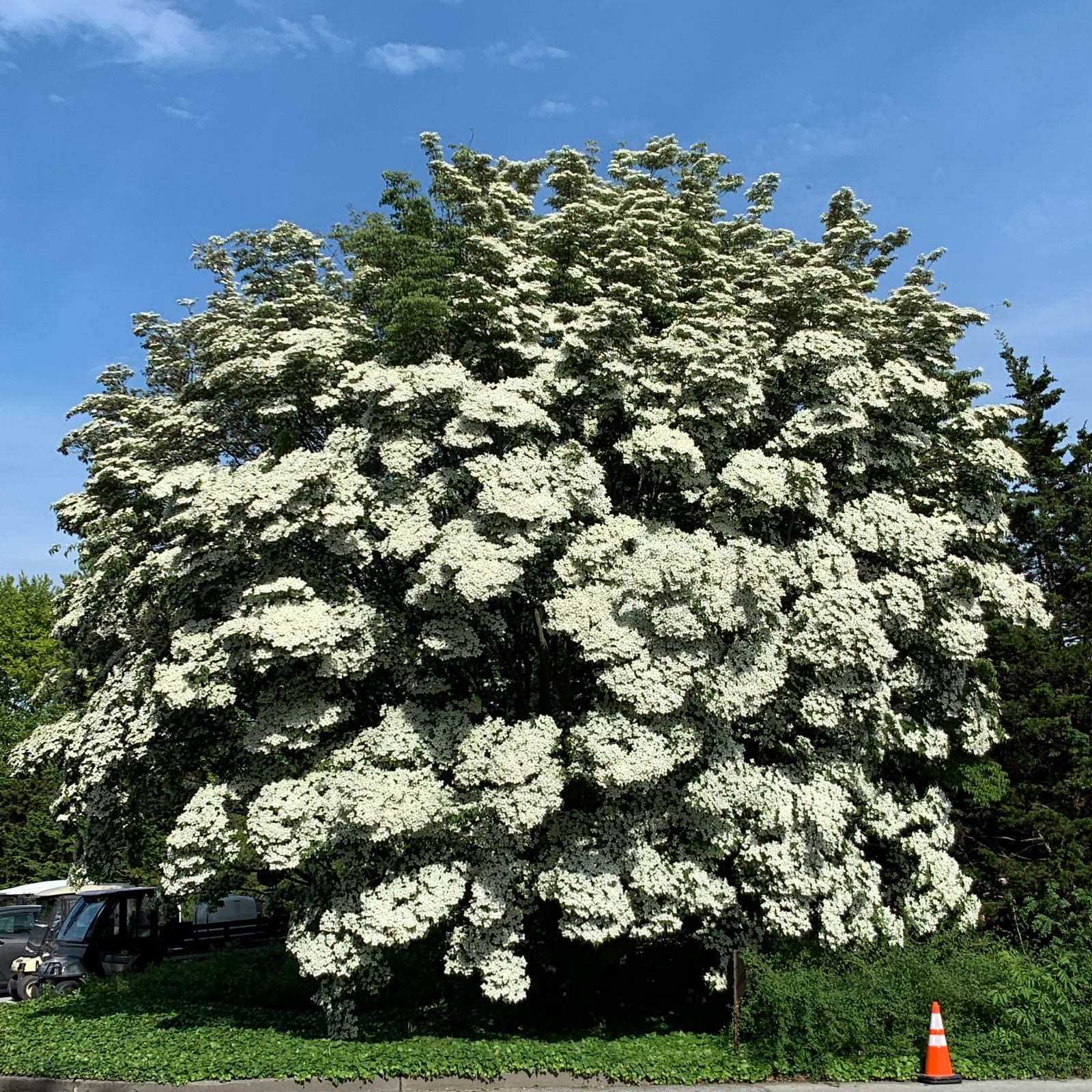
Cornus kousa Trees and Shrubs Online
Foliage 'Beni Fuji' [15] The deepest red-pink bracts of any cultivar. The color may not be as strong in warm summer areas. 'Elizabeth Lustgarten' and 'Lustgarten Weeping' [15] Notable for weeping habit, grow to 15' with branches that arch downwards. The habit is rounded and gentle, a mature specimen is attractive. 'Gold Star' [15]
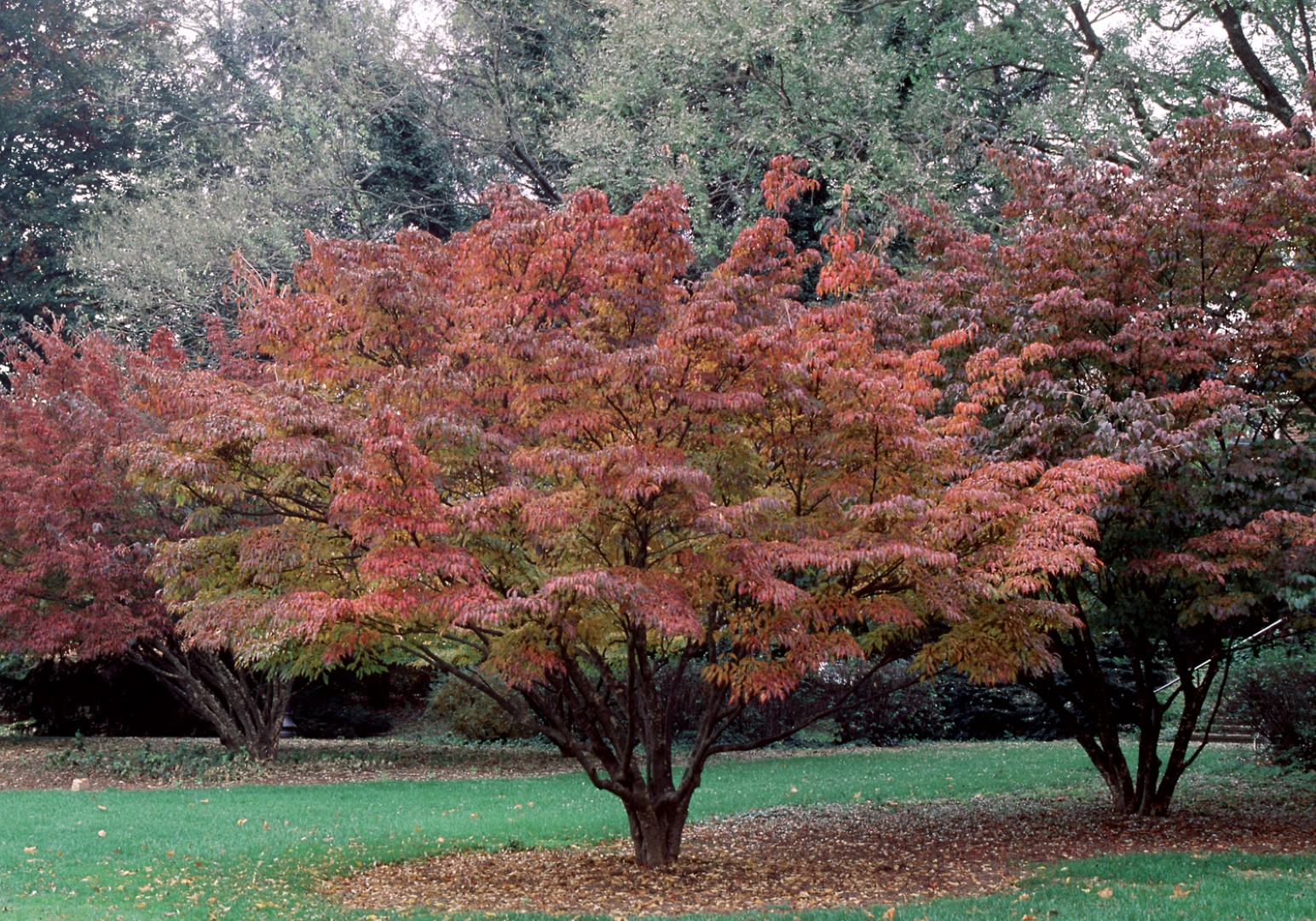
Cornus kousa Kousa dogwood Van den Berk Nurseries
The flowering 42-year-oldCornus kousa in the picture can be found near the Lake road near the front gate of the Arboretum, in square 915 position 3232. Note the bark of the Cornus kousa which is visible in the foreground.. Plant description: The genus Cornus (in the wide sense) comprises about 65 species. The genus has a broad natural range in the northern hemisphere and extends south to South.
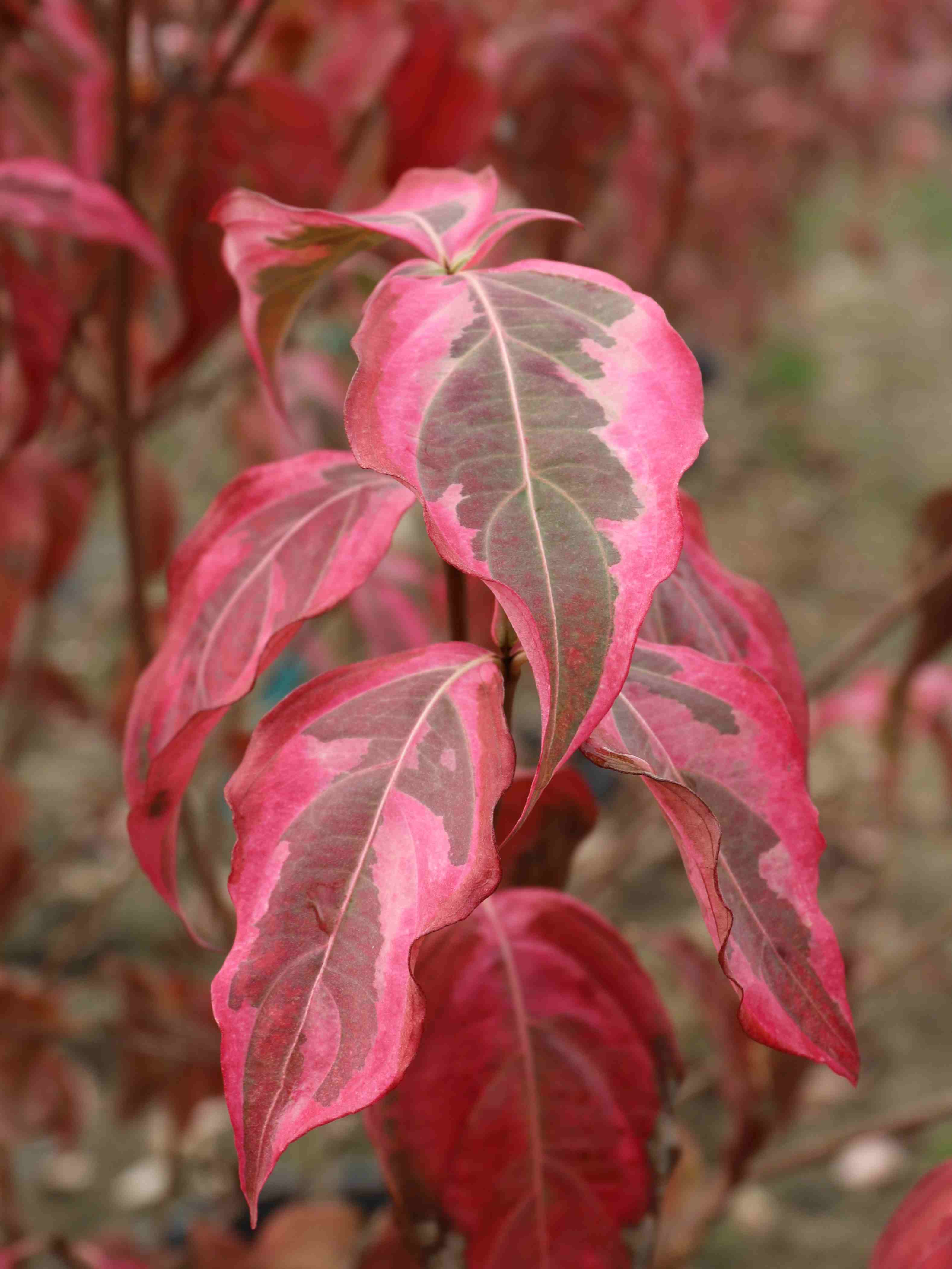
Cornus kousa Summer Fun fall color 1142017 104006 PM 3155x4206 Blue Heron Nursery
Best Uses Quick Reference Growing Guide What Are Kousa Dogwood Trees? Hardy in USDA Zones 5 to 8, the kousa dogwood hails from China, Japan, and Korea. This tree belongs to the Cornaceae family and the Cornus genus, alongside flowering C. florida and C. mas, the Cornelian cherry.

Cornus kousa Miss Satomi, also article about the physiology of autumn leaf colour Autumn leaf
Hardier and more disease-resistant than Cornus florida, Cornus kousa is an excellent alternative to flowering dogwoods. Grows with a vase-shaped habit when young but becomes more rounded with age. This plant grows at a slow to medium rate and can reach 15-30 ft. high and across (4-9 m). Winner of the Cary Award, which recognizes plants that are.
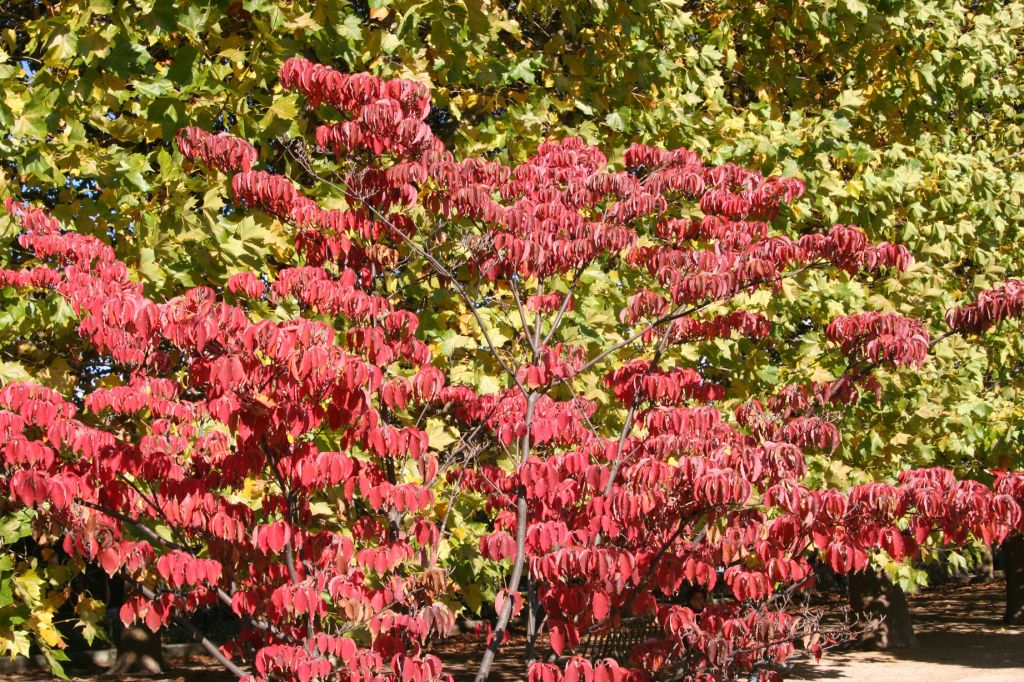
Cornus kousa, parure d'automne Sureaux
Summer Gold Dogwood, Cornus 'Summer Gold'. Suitable for small gardens, Cornus kousa 'Summer Gold' (Dogwood) is a multi-stemmed deciduous shrub or small tree of upright spreading habit. In spring, a profusion of creamy-white flowers, or bracts, smother the tree, creating a striking floral show. Its uncrinkled, bright green variegated foliage.

Cornus kousa, Chinese Dogwood La terre est un jardin
Par la suite, des fruits rouges très décoratifs se forment pour ponctuer çà et là le feuillage devenant peu à peu cramoisi en automne. Celui-ci tombé, on découvre alors une allure particulièrement graphique qui imposera sa présence délicate durant les longs mois d'hiver.
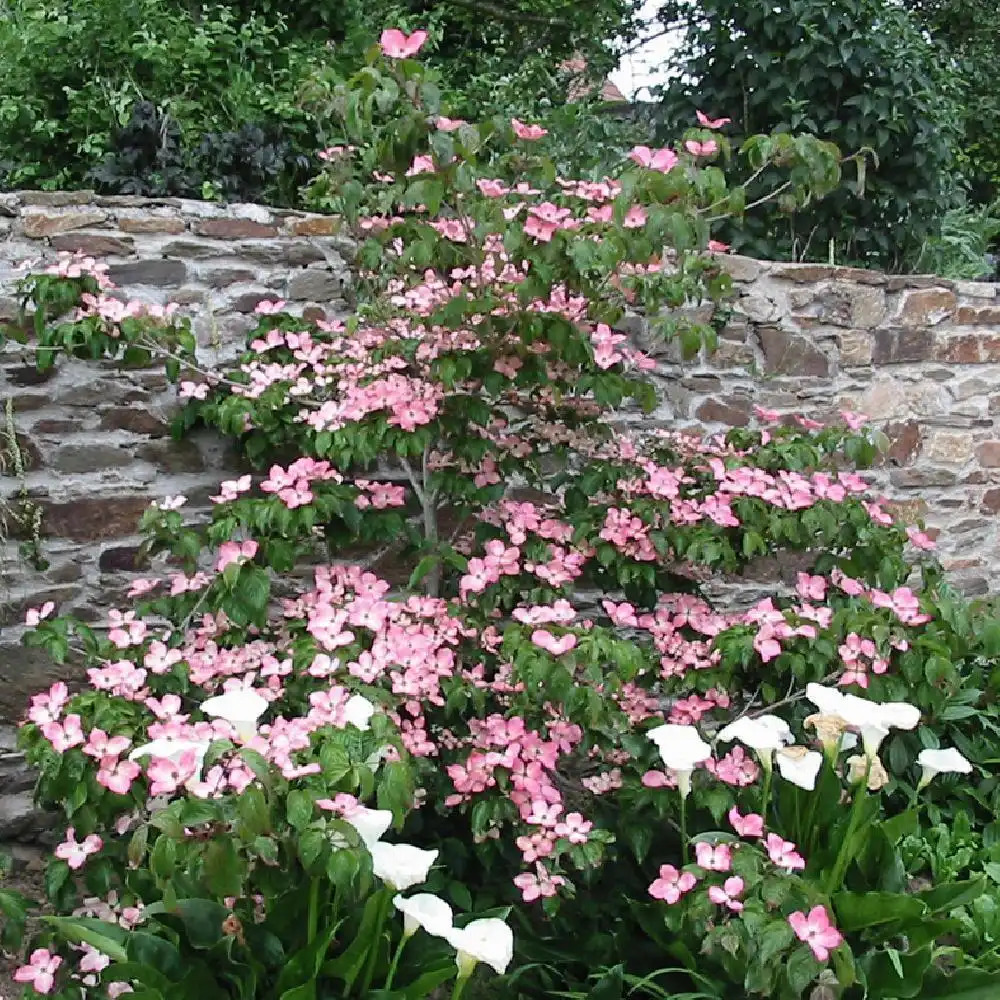
CORNUS kousa 'Satomi' Cornouiller d'Asie Cornouiller du Japon pépinières Lepage Bretagne
Plantez le Cornus kousa au printemps ou à l'automne. Apportez du compost, voire de la terre de bruyère et des aiguilles de pin si votre sol contient trop de calcaire. Arrosez copieusement et paillez le pied pour maintenir la fraîcheur pendant la période de végétation. Entretien

Cornus kousa automne Arbuste, Arbustes à fleurs, Cornouiller
Cornus kousa Growing and Care Guide. Scientific Name: Cornus kousa Common Name(s): Kousa Dogwood, Japanese Kousa, Chinese Kousa, Korean Kousa, Kousa Growing Zone (USA / UK Hardiness): 5 to 8 / H6 Plant Details. Life Cycle / Plant Type: Deciduous, bushy tree. Plant Height: 15 to 40 feet (4.5 to 12 m). Plant Spread: 15 to 32 inches (4.5 to 10 m). Blooms: Late spring and early summer.
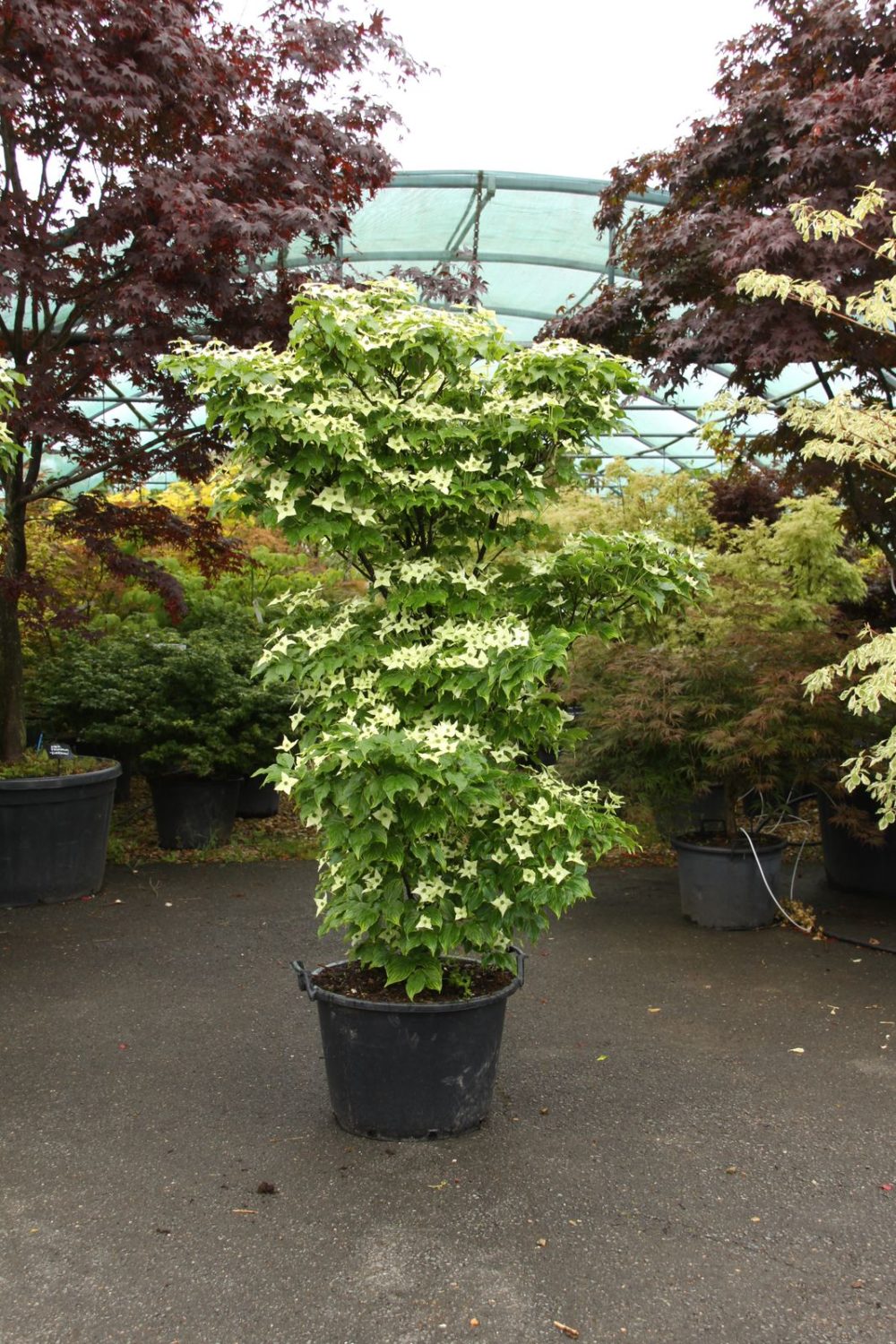
Cornus kousa var. chinensis 'Milky Way' Erable du Val de Jargeau
An attractive, readily available substitute has been found in Cornus kousa, the kousa dogwood. Planting the Cornus kousa can do wonders for a landscape design by adding four-season interest, extending the bloom time in the spring, and attracting plenty of wildlife, all while having a form and traits that add to its versatility.
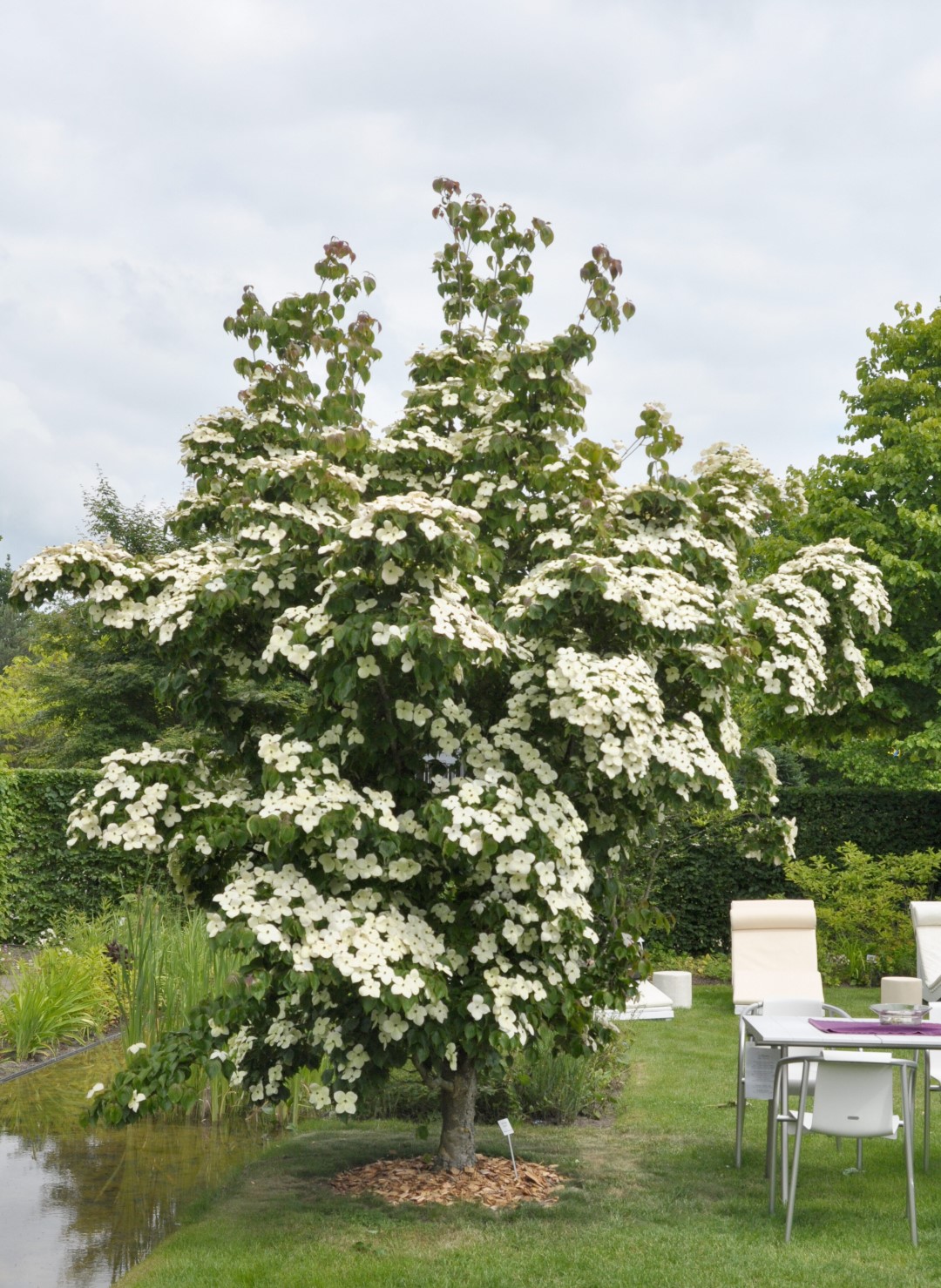
Cornus kousa 'China Girl' Cornus kousa 'China Girl' Van den Berk Pépinières
Oval, pointed leaves (to 4" long) are dark green, but usually turns attractive shades of reddish-purple to scarlet in autumn. Mottled, exfoliating, tan and gray bark on mature trees is attractive in winter. Genus name comes from the Latin word cornus meaning "horn", possibly in reference to the strength and density of the wood.

Épinglé sur plantes
Cynoxylon kousa Dendrobenthamia japonica Phonetic Spelling KOR-nus KOO-sa Description The Kousa dogwood is a handsome, small- to medium-sized tree reaching a mature height of 30 feet. Sometimes referred to as the Chinese dogwood, this Asian is a cousin to our native flowering dogwood. It can be used as a specimen plant or in shrub borders.